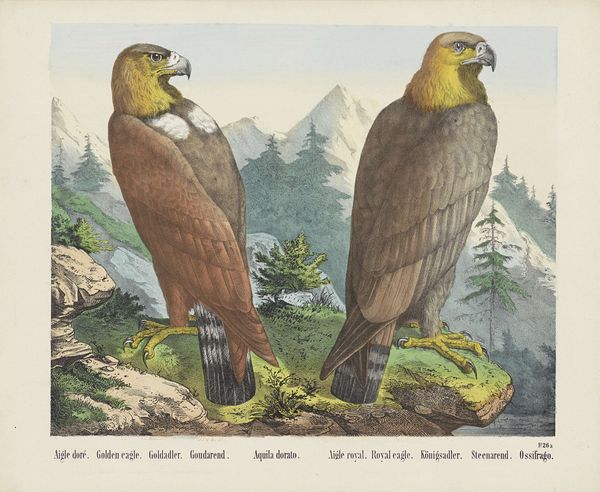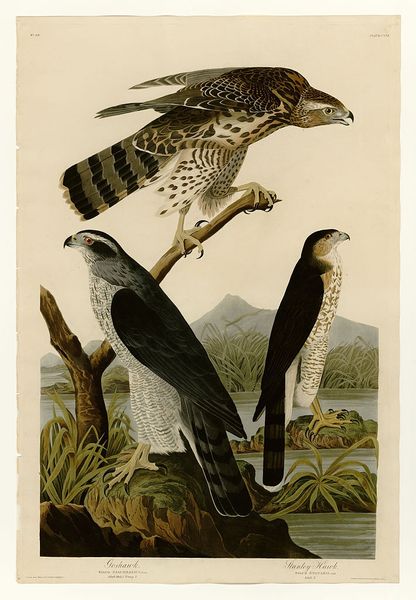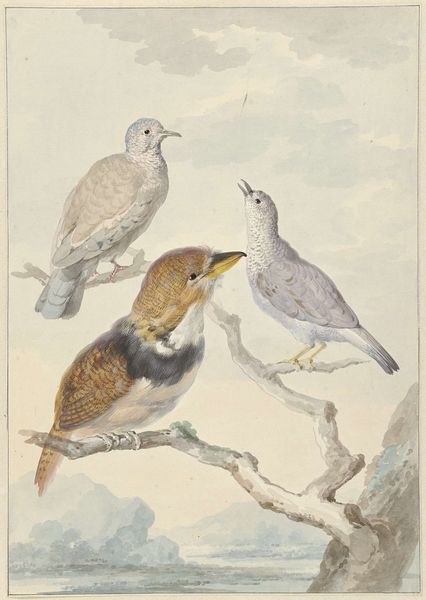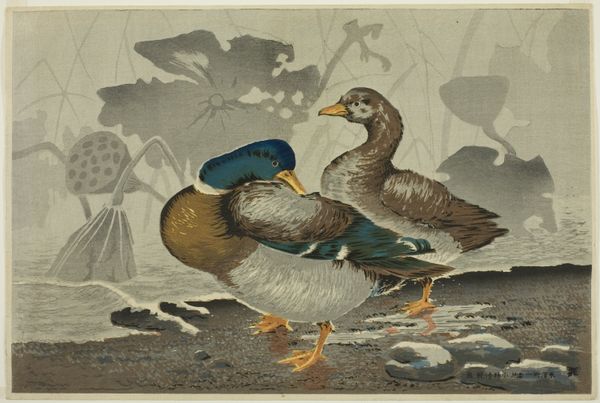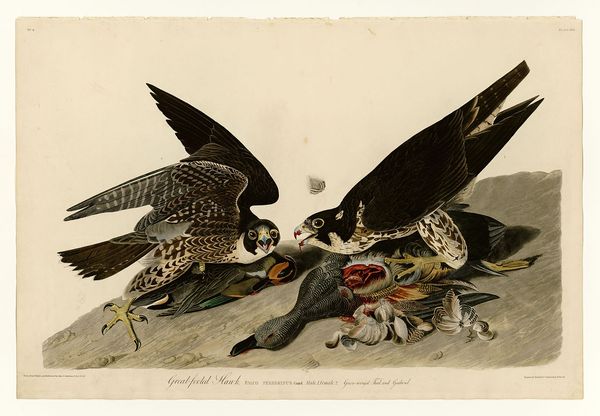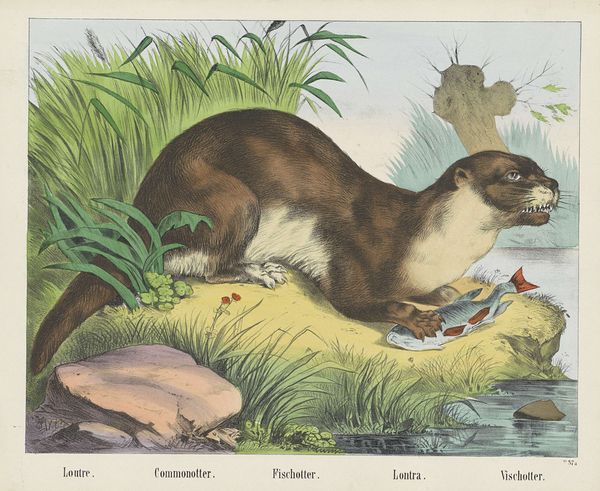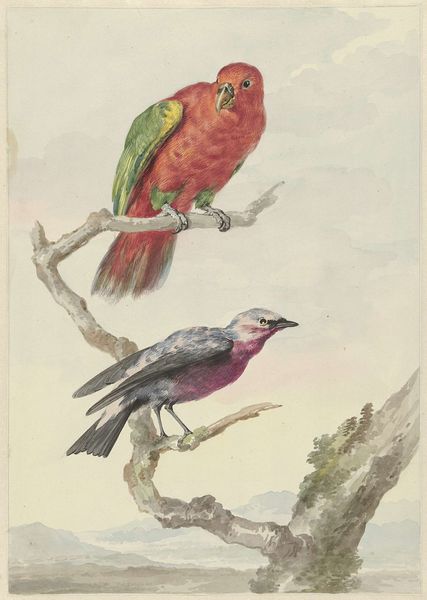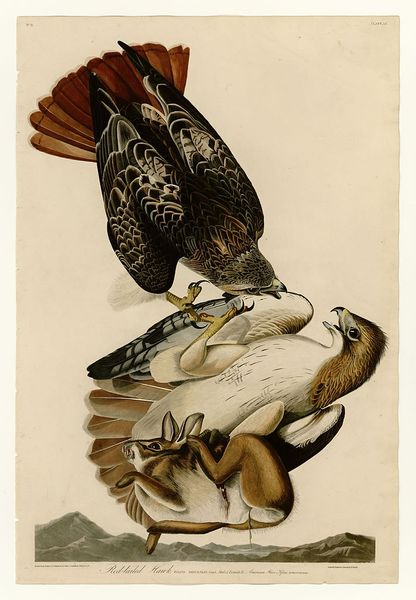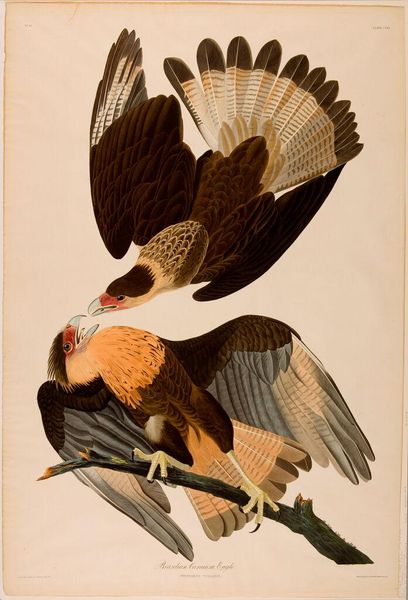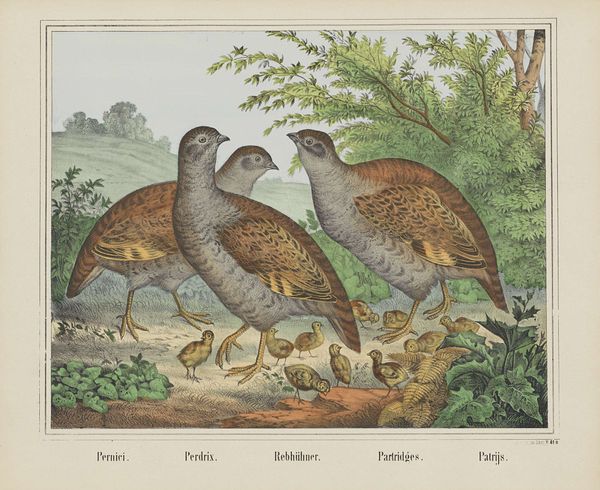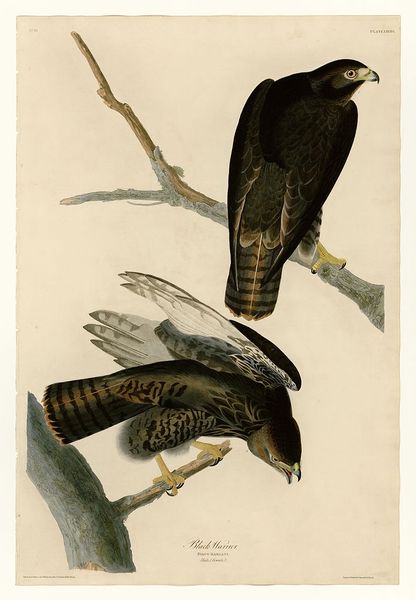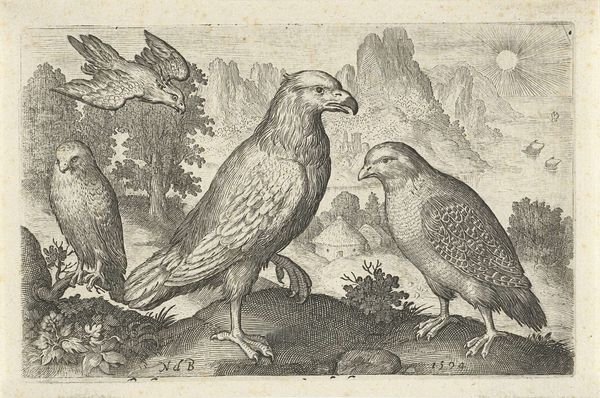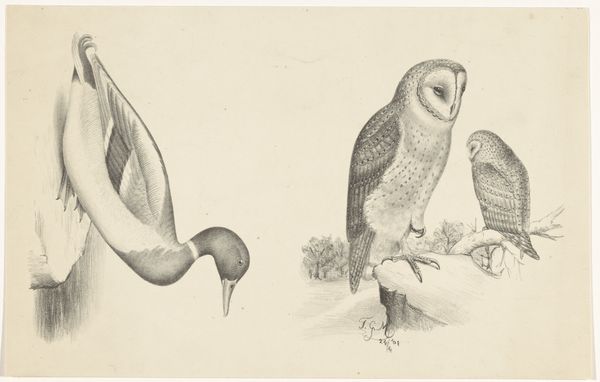
Condor. / Aigle des Alpes. / Lambs-vulture. / Lämmergeier. / Lammergier / Avolrajo 1829 - 1880
0:00
0:00
firmajosephscholz
Rijksmuseum
drawing, coloured-pencil, watercolor
#
portrait
#
drawing
#
coloured-pencil
#
watercolor
#
pencil drawing
#
coloured pencil
#
watercolour illustration
#
watercolor
#
realism
Dimensions: height 341 mm, width 411 mm
Copyright: Rijks Museum: Open Domain
Editor: Here we have "Condor. / Aigle des Alpes. / Lambs-vulture..." created sometime between 1829 and 1880 by firma Joseph Scholz. It's a watercolor and coloured-pencil drawing showing two impressive birds of prey. I'm struck by how different they appear, despite seemingly belonging to the same ecological niche. What do you make of it? Curator: It's fascinating how these depictions, intended for scientific accuracy, inevitably reflect the cultural perspectives of their time. Consider the late 18th and 19th centuries. Natural history illustrations like this served to catalogue the world but also to establish a visual hierarchy, reinforcing human dominance over nature. Do you see how each bird is rendered with equal detail and presence, almost as 'portraits'? Editor: I do. They’re posed very formally, almost like nobility. But are you suggesting the act of documenting them reinforces a sense of control? Curator: Precisely. The very act of naming, classifying, and visually representing these creatures in a static medium like watercolor is a form of claiming ownership, of bringing the wild into a controlled, domestic space. It served to establish order and reason over a world seen as chaotic. Where would an average citizen have seen such wild animals outside of a painting? Editor: That makes perfect sense. It’s about imposing order. I never thought about the implications of documentation itself. Curator: Indeed, consider the scientific expeditions of that time. Artwork created on those voyages provided imagery that bolstered imperial agendas by turning nature into property through these artistic depictions. It is hard to observe those kinds of effects. Editor: It changes how I see even something as straightforward as a bird illustration! It’s a new way to read a seemingly simple image.
Comments
No comments
Be the first to comment and join the conversation on the ultimate creative platform.
